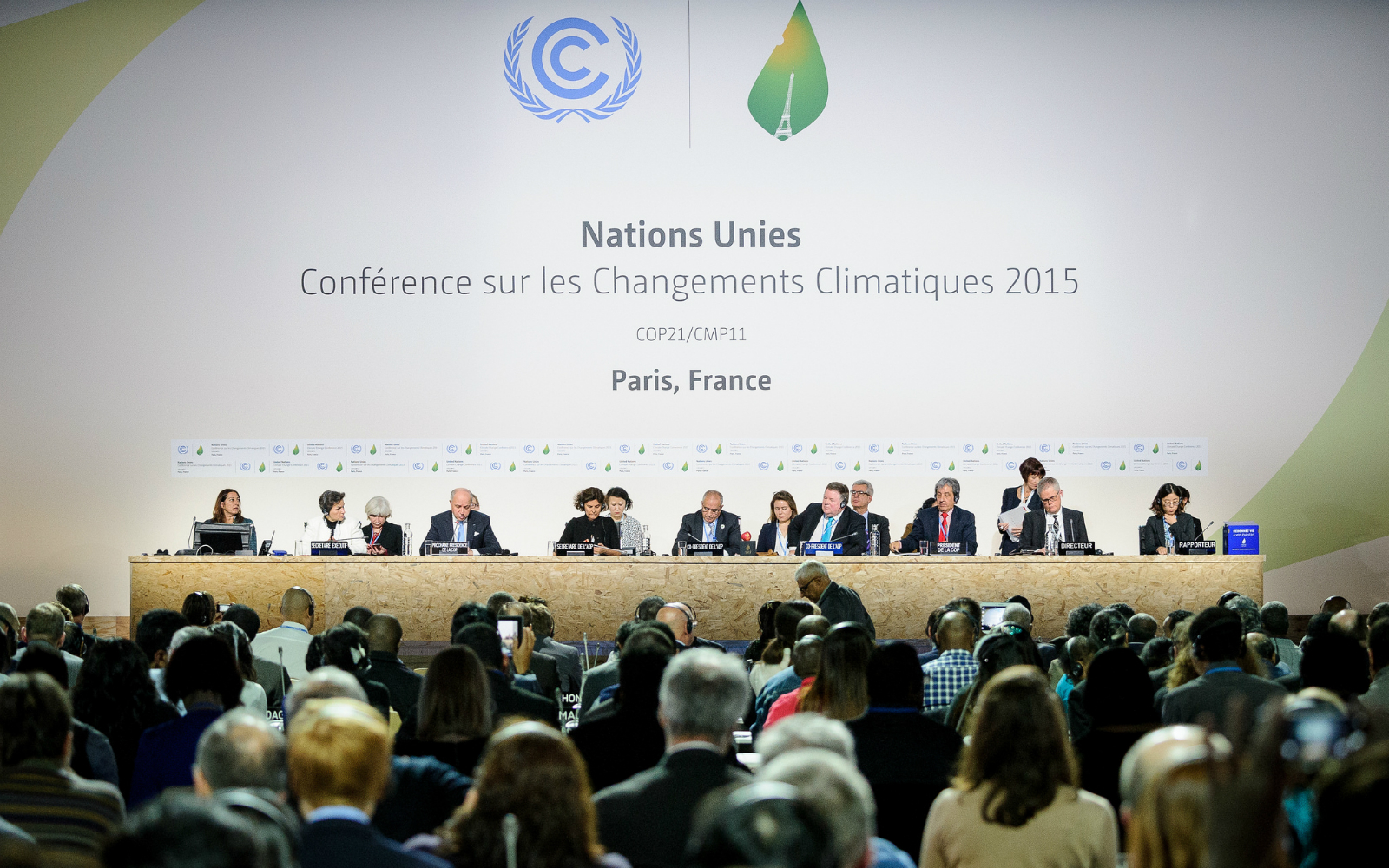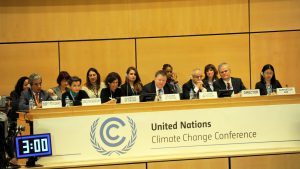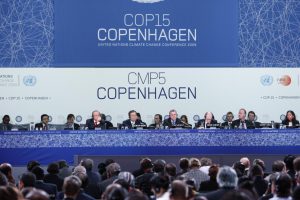The Paris climate change talks have just kicked-off, and there is general agreement amongst international society and the participants: a new global climate deal will be struck. That deal will be based on the UNFCCC, but different from the Kyoto Protocol in terms of degree of participation, strength of action taken, transparency and legal force.
Almost twenty years ago the Kyoto Protocol set legally binding emissions reduction targets for the developed nations. Despite appearing to have real force, it became increasingly apparent that Kyoto failed to take into account domestic political realities. As a result this “top-down” method of climate governance faced obstacle after obstacle in major carbon emitting nations: The US never ratified it; in 2011 Canada pulled out. After the Copenhagen talks in 2009 changes started to be seen in how international climate mechanisms were being put together, and the “bottom-up” INDC system took shape. But this development brings its own challenges for the world’s efforts to respond to climate change and implement the aims of the UNFCCC.
From top-down to bottom-up
The climate system put in place by the UNFCC and the Kyoto Protocol put a “firewall” in place between developed and developing nations: the two groups had different responsibilities, duties, and rights. The developed nations were to make earlier commitments to reduce emissions than developing nations, and to provide them with support. Meanwhile, on receiving that support the developing nations were to act on climate change in accordance with their national circumstances. The Kyoto Protocol was an example of a “top-down” approach to building a system of climate governance, an approach which continued until the “two-track negotiations” of the Bali Roadmap.
Those two-track negotiations meant the developed nation signatories to the Kyoto Protocol would set up special working groups during the second commitment period to set quantified targets for major emissions cuts post-2012; while developing nations and those developed nations not signed up to Kyoto (primarily the US) would discuss further climate change response measures in special working groups designed to foster long-term cooperation.
The top-down approach was legally binding and had strong enforcement mechanisms and a powerful measurement, reporting and verification system to ensure transparency. But reaching consensus was difficult and progress was slow. The domestic politics of key signatories (primarily the developed nations), particularly due to changes in the global political economy and the make-up of global emissions, and the impact of the financial crisis, meant no deal was reached in Copenhagen – a huge setback for the top-down approach.
Against this background we saw international climate interaction shift from north and south being in opposition, to a battle between the major powers, and between the large and small nations. The National Action Plans suggested by the Umbrella Group and the Commitment and Review approaches were found to better suit the needs of both international climate diplomacy and domestic politics. As such, these ideas became increasingly accepted and the Copenhagen and Cancun talks saw new rules for managing emissions commitments take shape.
In Warsaw in 2013 the INDC process was started – by 2020 each country would submit its own independently determined plans for emission cuts. There was now agreement on a new bottom-up approach, and the outlook for Paris was looking up. The new approach meant countries would put forward their own climate action plans and targets, rather than having this set through tortuous negotiations processes, and those plans and targets would, in the aggregate, represent joint action plans and global targets.
The INDC approach takes more account of national circumstances than the principles and rules embodied in the UNFCCC, representing an attempt to achieve the UNFCCC’s goals by relying on the individual national interest. It is voluntary and non-intrusive, and the action plans and targets it produces are diverse and varied, and may by accompanied with cooperative and facilitative mechanisms encouraging further participation. But a lack of a single verification method or a mechanism to encourage or require tougher targets mean it cannot ensure overall action with be powerful enough, and political trust and positive interactions still need to be strengthened.
Knocking down the firewall
The INDCs are a major change and will have a significant impact on global climate governance. The INDCs submitted are very varied and of different standards, and based on each country’s understanding of its own responsibilities and capabilities. In effect the UNFCCC’s distinction between the responsibilities of developed and developed nations, and the associated actions to be taken, has been broken down. The INDC process is in effect a rebalancing of the principles of common but differentiated responsibilities, respective capabilities, national circumstances and the corresponding “unequal commitments” of the UNFCC.
The new system changes the nature of national commitments and action. The principles of common but differentiated responsibility and fairness are the foundation of international climate governance, both coordinating the responsibility of the developed nations for their historical emissions with the need for future development and emissions of the developing world; and linking the technological and financial strengths of the developing nations with the urgent need for capacity building in developing nations and the overall global need to respond to climate change. This ultimately led to the “unequal commitments”, via the “dichotomy” and the annexes.
But in the current INDC process, both developed and developing nations are setting their own targets and action plans on one negotiating track: together, of their own accord, at the same time, and even without reference to whether or not support has been received. However, over time there will be calls for these targets to become legally binding and more transparent. That means new and unexpected pressure for developing nations. With the “firewall” at risk of collapse, there is a major new challenge for the global climate system: how to balance climate responsibilities and avoid major powers shirking their responsibilities under the UNFCCC.
Also, the INDCs allow each country to decide upon its own responsibilities, commitments and actions. This means the legal basis for national action is shifting from climate responsibility to respective capability and intent. That trend is the outcome of the realpolitik of major power diplomacy and the domestic politics of key countries. It bypasses the more scientific, fair and effective approach of a multilateral system based on limiting temperature rises, and allows major powers with climate responsibilities to avoid the limiting emission quotas of a top-down system. The change will make it easier for signatories, particularly the developed nations, to avoid their responsibilities and duties; and will make it more difficult to put in place strong, effective and fair controls on global emissions.
Moreover, the INDCs of developed nations are currently primarily about mitigation – adaptation, funding, technology and capacity building are missing, as are measures for transparency of actions taken and support given. This is in effect the avoidance of duties accepted under the UNFCCC, and means basic parts of the international climate system are missing from the INDC process. This will not help us reach a new powerful, balanced and sustainable agreement.
The UNFCCC’s coverage of both mitigation and adaptation, as well as the strength and potential for action of individual nations, and even the arrangements for support for action in developing countries, represented both a balancing of the need for long-term transitions and immediate response, and a consideration of the different responsibilities, duties, capabilities and stages of development of the developed and developing nations. The new bottom-up process has not advanced that agenda equally, which will not help build a fair and just system, or increase global efforts overall. And it is the strength of global efforts that will determine whether or not the aims of the UNFCC are achieved.






